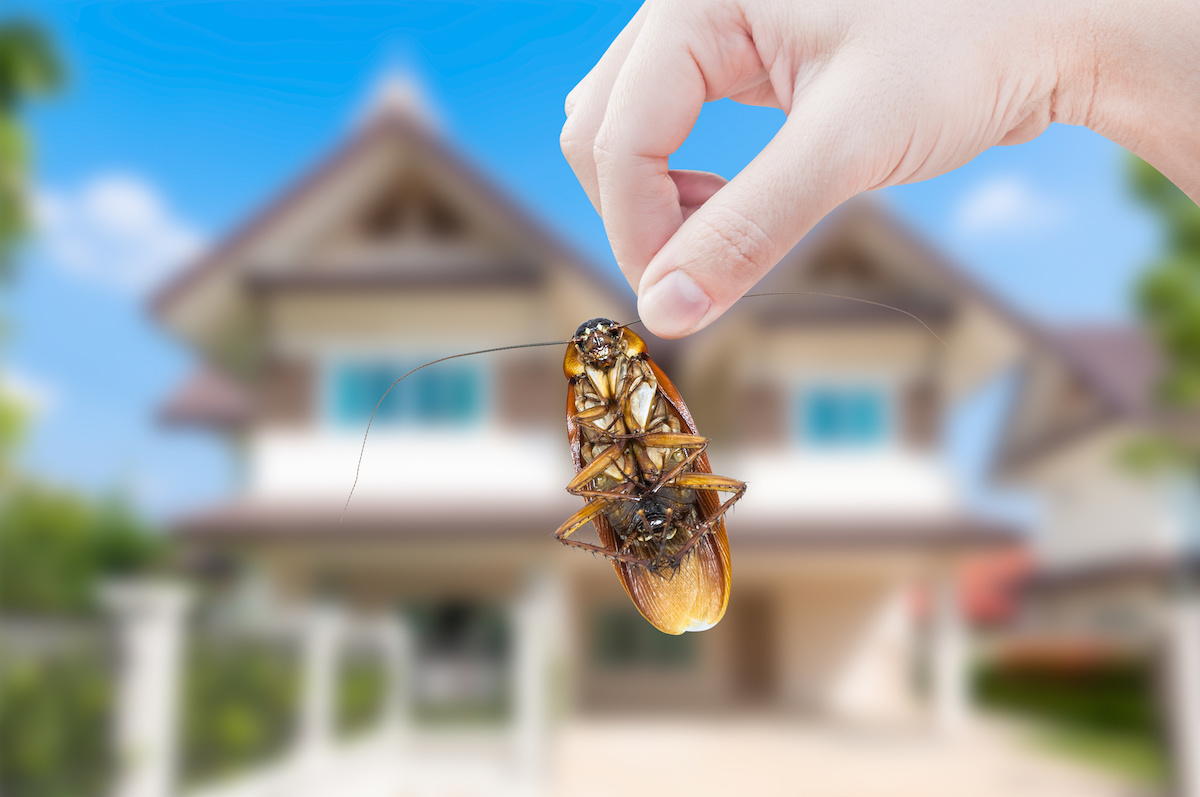Have you ever opened your pantry only to find your favourite biscuits riddled with tiny, unwanted guests? Biscuit beetles, also known as drugstore beetles, are called like that because they commonly infest and feed on dry food products, including biscuits. Their name reflects their tendency to be found in other stored food items like cereals, flour, and other pantry staples. So you can guess that they predominantly infest kitchens and pantries due to the abundance of food sources available. Whether you’re dealing with a minor annoyance or a full-blown invasion, our guide will arm you with the knowledge and tools needed for victory in this crumb-filled conflict.
Identifying the Biscuit Beetle
You need to know what you’re fighting against, so your first step should be to meet your enemy—the devourer of your biscuits! If you manage to recognise the biscuit beetles, you can still manage to save your stored goods.
Adult Appearance
- Size and Shape: Adult biscuit beetles are about 2-3 mm in length but despite their small size, they can be quite destructive due to their ability to infest various dried food products.
- Colouration: Their reddish-brown colour makes them blend in a little bit when placed next to wooden surfaces or amid various cereals and grains. Because of their small, cylindrical bodies, they may easily penetrate packing materials like paper and thin plastic.
- Distinct Lines on Wing Covers (Elytra): Their wing covers, also known as elytra, have a characteristic that makes them easy to identify: unique longitudinal lines running down them. In well-lit environments, these lines appear to have grooves that could be seen without the need for magnification.
If you discover tiny reddish-brown bugs crawling in your pantry, there’s a good chance you stumbled upon biscuit beetles. You’ll need a magnifying glass for the next part, but if you use one, you’ll notice fine linear ridges on their backs—this confirms they are likely biscuit beetles rather than another type of pest like grain weevils (which have more irregular body shapes and markings).
Larvae
- Appearance: The larvae stage is equally critical for identifying an infestation but can be trickier due to its subtlety. Biscuit beetle larvae are cream-coloured grubs with slightly curved bodies resembling miniature caterpillars. Typically less than 5 mm long when fully grown, these larvae blend into many environments making visual detection challenging.
- Habitat: They prefer dark secluded places within infested food items like bread crumbs inside packages or hidden corners behind storage cabinets where old food debris might accumulate unnoticed over time.
You might not see adult beetles right away but instead find what looks like tiny white worms wriggling amidst spilled breadcrumbs at the back end corner shelf holding rice bags; those could very well be larval stages indicating active reproduction cycles ongoing hence signalling potential broader spread if left unchecked further!
Signs of Presence of the Buiscuit Beetles
Identifying an infestation early is crucial to managing and eliminating biscuit beetles (Stegobium paniceum). These pests are notorious for infiltrating stored food products, causing significant damage. Here’s a deeper dive into the telltale signs that indicate their presence:
1. Small Holes in Packaging
One common indicator is the presence of tiny holes in packaging materials such as cardboard boxes, paper bags, or even plastic containers.
Adult biscuit beetles chew their way out of infested items after completing their development cycle inside. The larvae burrow through packaging to reach food sources, leaving behind these small holes.
If by opening your pantry you notice multiple pin-prick-sized holes in a box of cereal or flour packages, this is a good indicator. These perforations signify where adult beetles have emerged after pupation inside the product. Such evidence often means that more eggs could be present within other stored goods nearby.
2. Frass (Fine Powder)
Another sign includes frass—fine powdery residue left behind by feeding larvae.
Frass consists mainly of excrement and substrate particles chewed up by larval stages during feeding activities.
If you find what appears to be dust sprinkled across your pantry shelves or around sealed food containers; this could actually be a result of biscuit beetle activity. For instance, if you notice a thin layer resembling sawdust near pasta packages or dry pet food bags, it’s likely due to these insects gnawing through both packaging material and contents alike.
3. Damaged Food Items
Look for evidence like chewed-up grains or dried goods with unusual clumping caused by larval secretions binding particles together.
Larvae feed voraciously on various dry foods including cereals, spices, nuts—and yes—biscuits! Their secretions can cause individual pieces to stick together unnaturally.
While sifting through rice grains before cooking dinner one evening—you might discover some clusters stuck firmly together without any apparent reason other than possible moisture exposure—but upon closer inspection under good lighting conditions—it turns out those clumps were created because certain parts had been eaten away already!
4. Beetle Sightings
Spotting live adults crawling near infested areas often indicates an active infestation requiring immediate action.
If you see tiny reddish-brown beetles scurrying along kitchen counters at night when lights are turned off—or hiding beneath loose edges or folds within cupboard linings—they’re most probably adult forms seeking new sites ready next generation propagation cycles soon enough…
Steps for Eliminating Biscuit Beetle Infestations
Once you’ve identified an infestation, follow these steps meticulously:
Step 1. Discarding Infested Food Items
Begin by carefully inspecting all stored foods:
- Thoroughly check cereals, flours, spices, pet foods, dried fruits/nuts—any dry goods susceptible to infestation.
- Use sealed glass jars when storing new items; this not only prevents further contamination but also helps keep track in case another outbreak occurs since glass allows clear visibility without opening the container repeatedly.
- Dispose of any infested products immediately outside your home premises using tightly sealed garbage bags preventing re-entry points within household waste bins from attracting more pests inadvertently during disposal phases!
Step 2. Cleaning Pantry Shelves
Cleaning plays a crucial role post-disposal phase ensuring no remnants attract future invaders back again!
Empty Entire Pantry Space
Remove every single item off shelves including non-food objects residing nearby potentially harbouring hidden bugs unnoticed otherwise initially suspected solely restricted towards consumables alone previously thought affected primarily instead;
Vacuum All Surfaces
After completely emptying the pantry space, the next critical step involves thoroughly vacuuming all surfaces within it.
Use a vacuum cleaner with a hose attachment to reach into corners and edges where crumbs and debris tend to accumulate over time—these areas often become breeding grounds for biscuit beetles if left unattended. Make sure to vacuum along baseboards and behind shelving units as well since these spots can trap food particles unnoticed during regular cleaning routines.
Final Thoughts
In summary, tackling a biscuit beetle infestation requires a systematic pest control approach: identifying the signs of an invasion, thoroughly cleaning and vacuuming affected areas, properly storing food items in airtight containers, and utilising natural or chemical treatments as necessary. By following these steps diligently, you can effectively eradicate these pests from your home. Remember that prevention is just as crucial as treatment; maintaining cleanliness and vigilance can save you from future infestations. So next time you reach for that pantry staple, take a moment to ensure it’s stored safely—your proactive efforts today will safeguard your home tomorrow. Are you prepared to reclaim your kitchen from these tiny intruders? Remember: A pest-free home starts with informed action!



